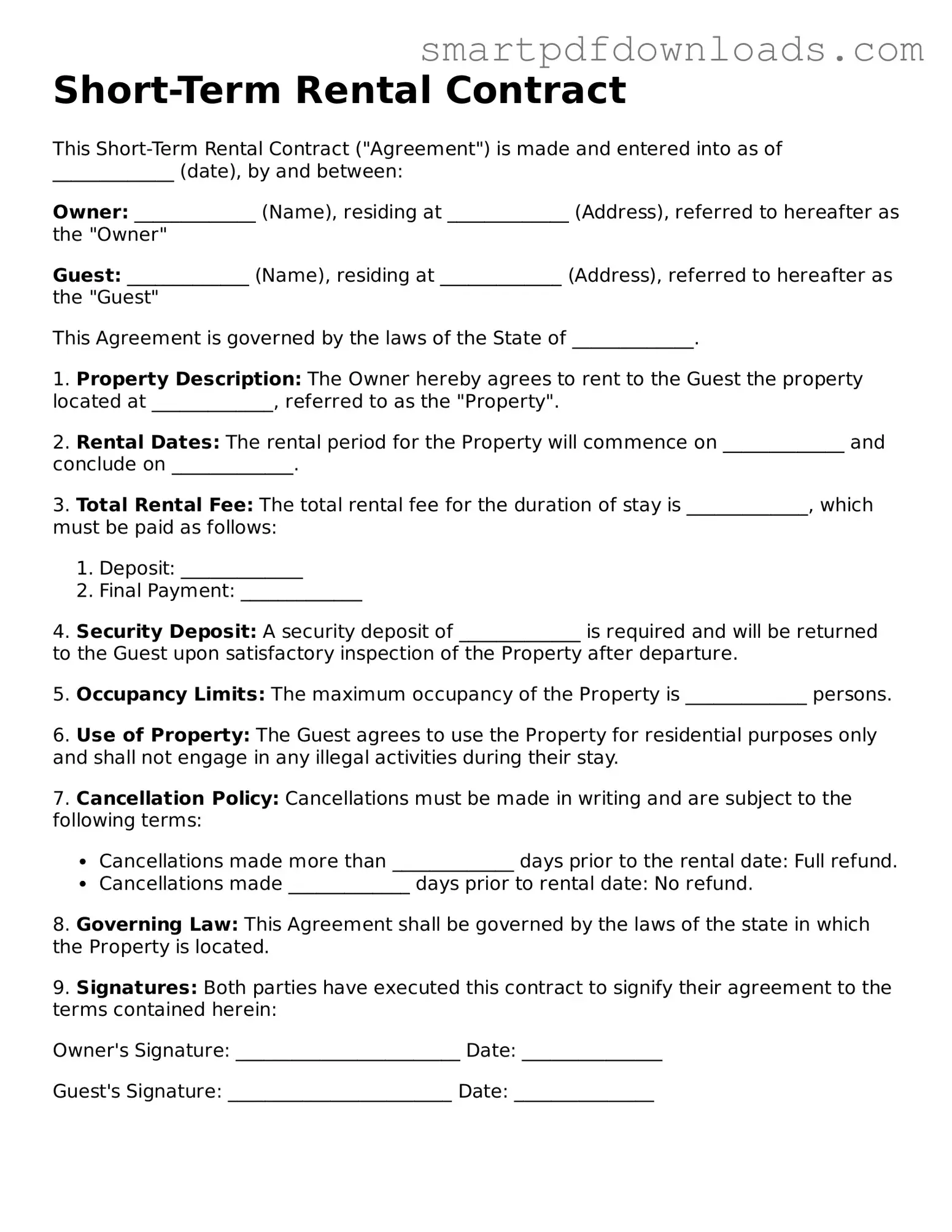Short-Term Rental Contract
This Short-Term Rental Contract ("Agreement") is made and entered into as of _____________ (date), by and between:
Owner: _____________ (Name), residing at _____________ (Address), referred to hereafter as the "Owner"
Guest: _____________ (Name), residing at _____________ (Address), referred to hereafter as the "Guest"
This Agreement is governed by the laws of the State of _____________.
1. Property Description: The Owner hereby agrees to rent to the Guest the property located at _____________, referred to as the "Property".
2. Rental Dates: The rental period for the Property will commence on _____________ and conclude on _____________.
3. Total Rental Fee: The total rental fee for the duration of stay is _____________, which must be paid as follows:
- Deposit: _____________
- Final Payment: _____________
4. Security Deposit: A security deposit of _____________ is required and will be returned to the Guest upon satisfactory inspection of the Property after departure.
5. Occupancy Limits: The maximum occupancy of the Property is _____________ persons.
6. Use of Property: The Guest agrees to use the Property for residential purposes only and shall not engage in any illegal activities during their stay.
7. Cancellation Policy: Cancellations must be made in writing and are subject to the following terms:
- Cancellations made more than _____________ days prior to the rental date: Full refund.
- Cancellations made _____________ days prior to rental date: No refund.
8. Governing Law: This Agreement shall be governed by the laws of the state in which the Property is located.
9. Signatures: Both parties have executed this contract to signify their agreement to the terms contained herein:
Owner's Signature: ________________________ Date: _______________
Guest's Signature: ________________________ Date: _______________
